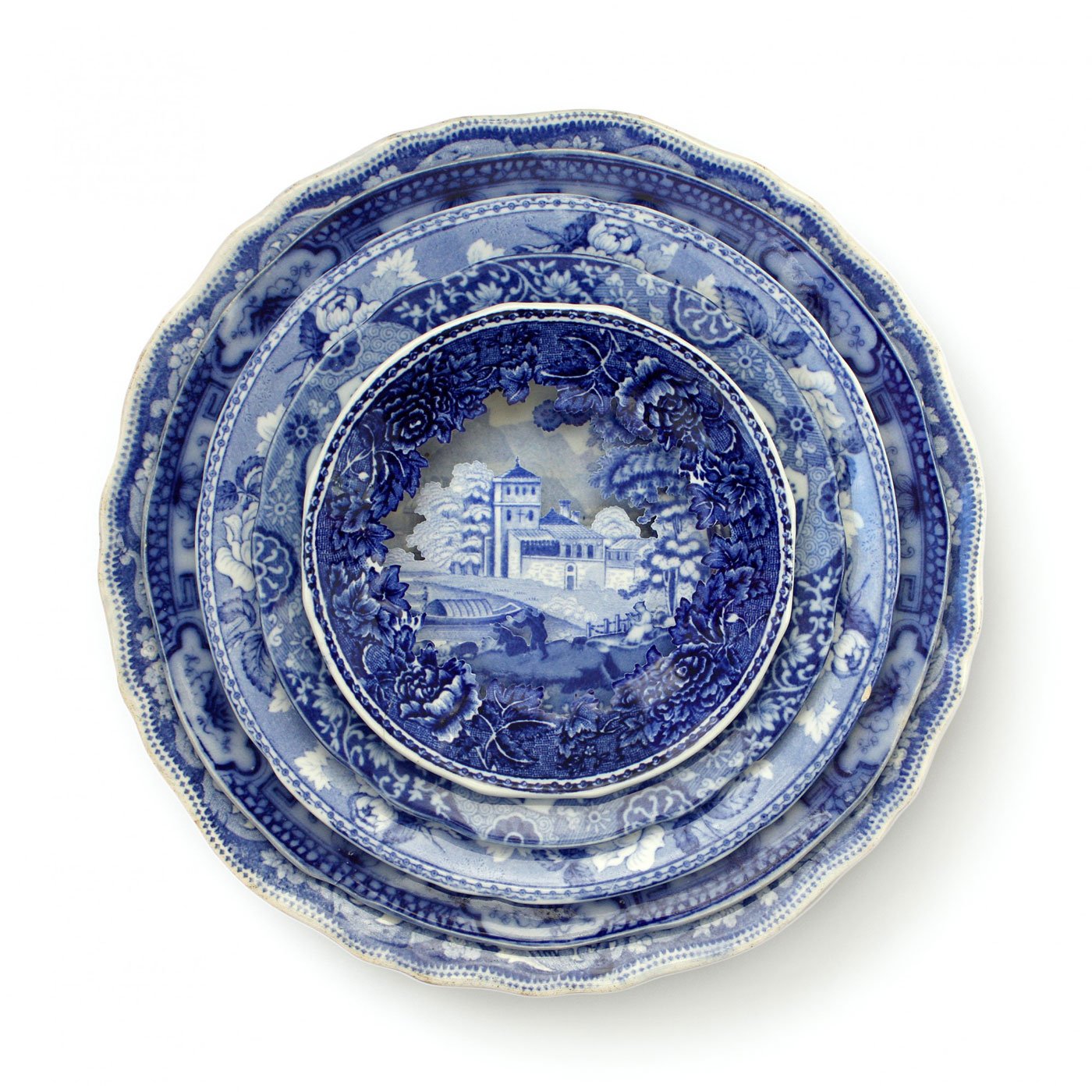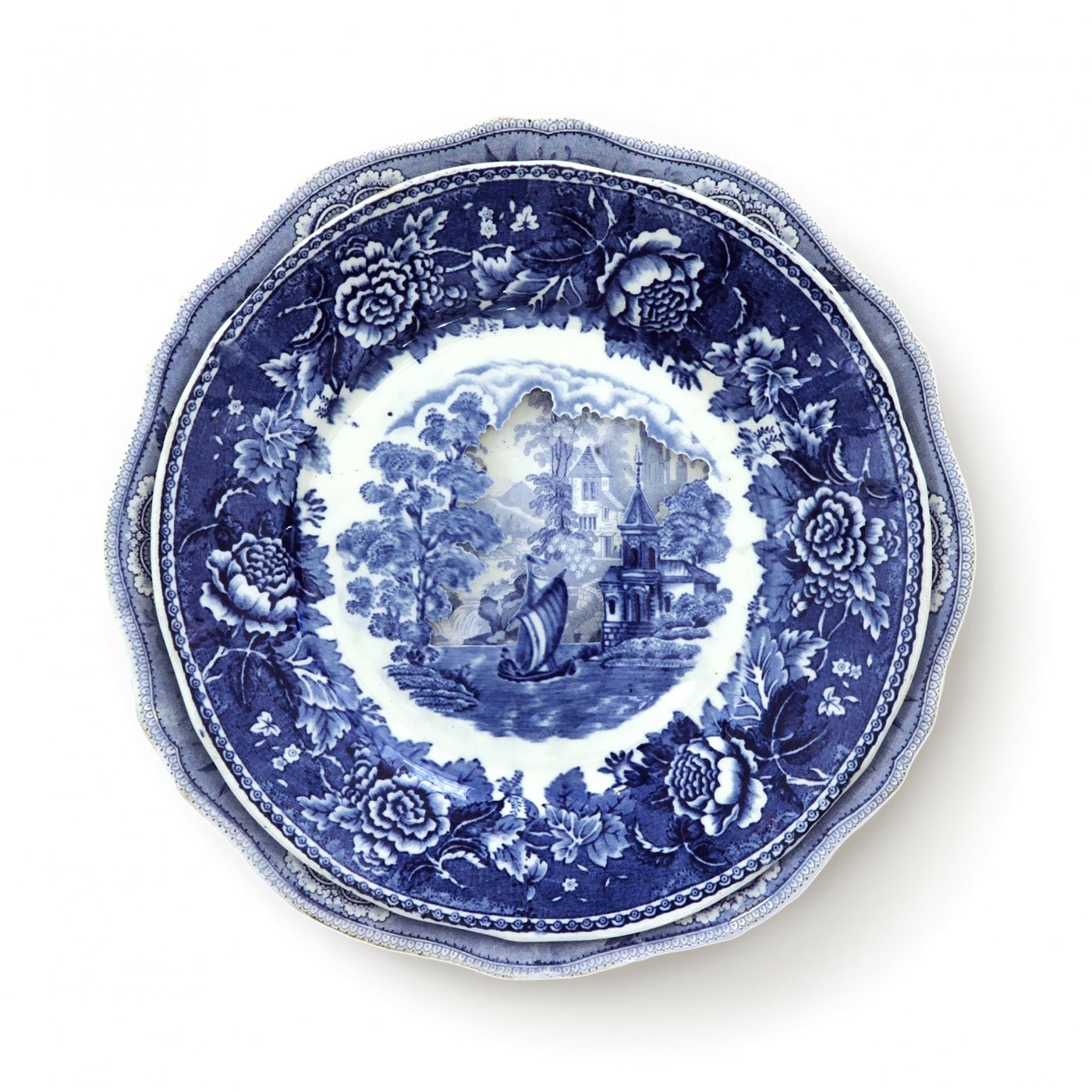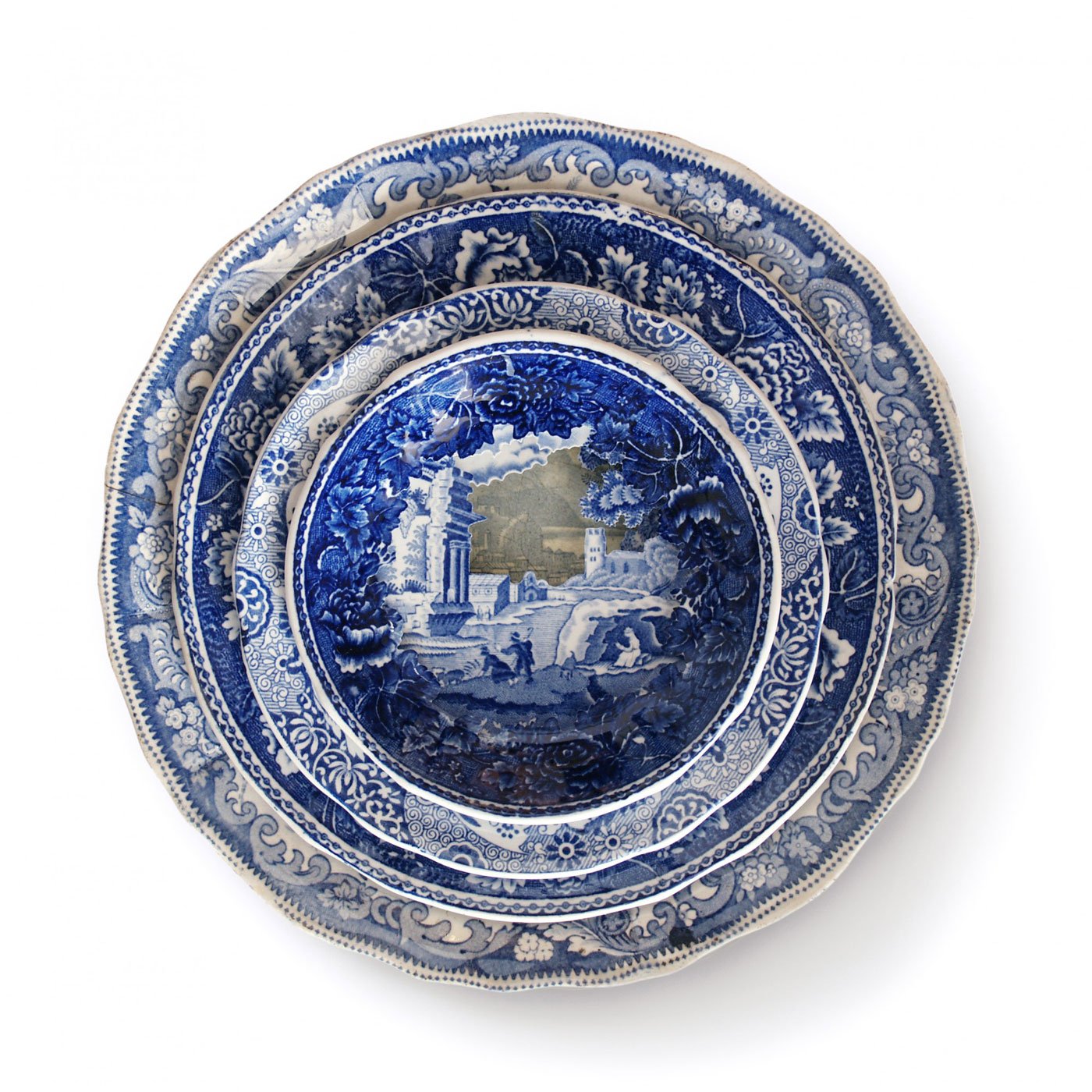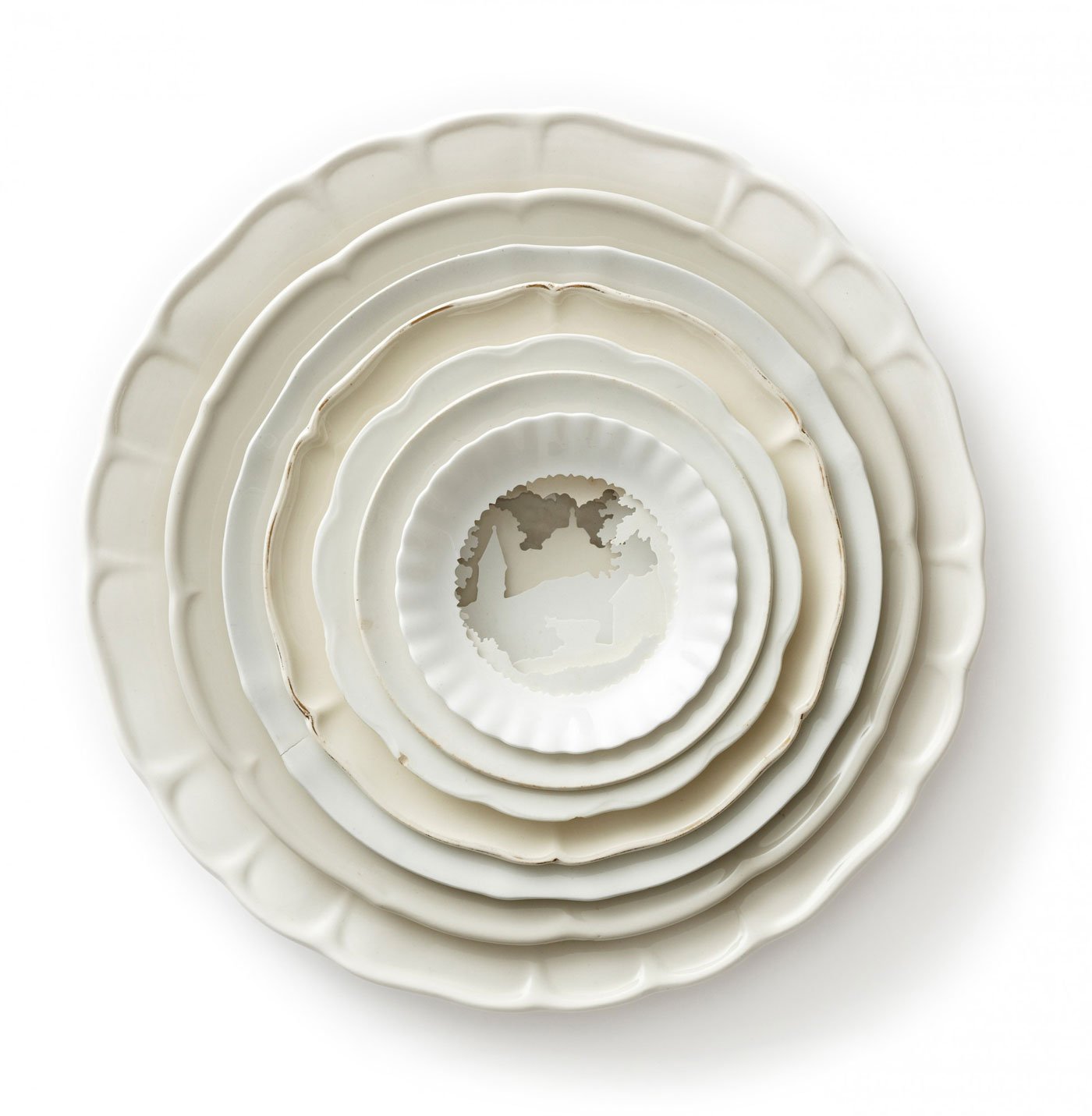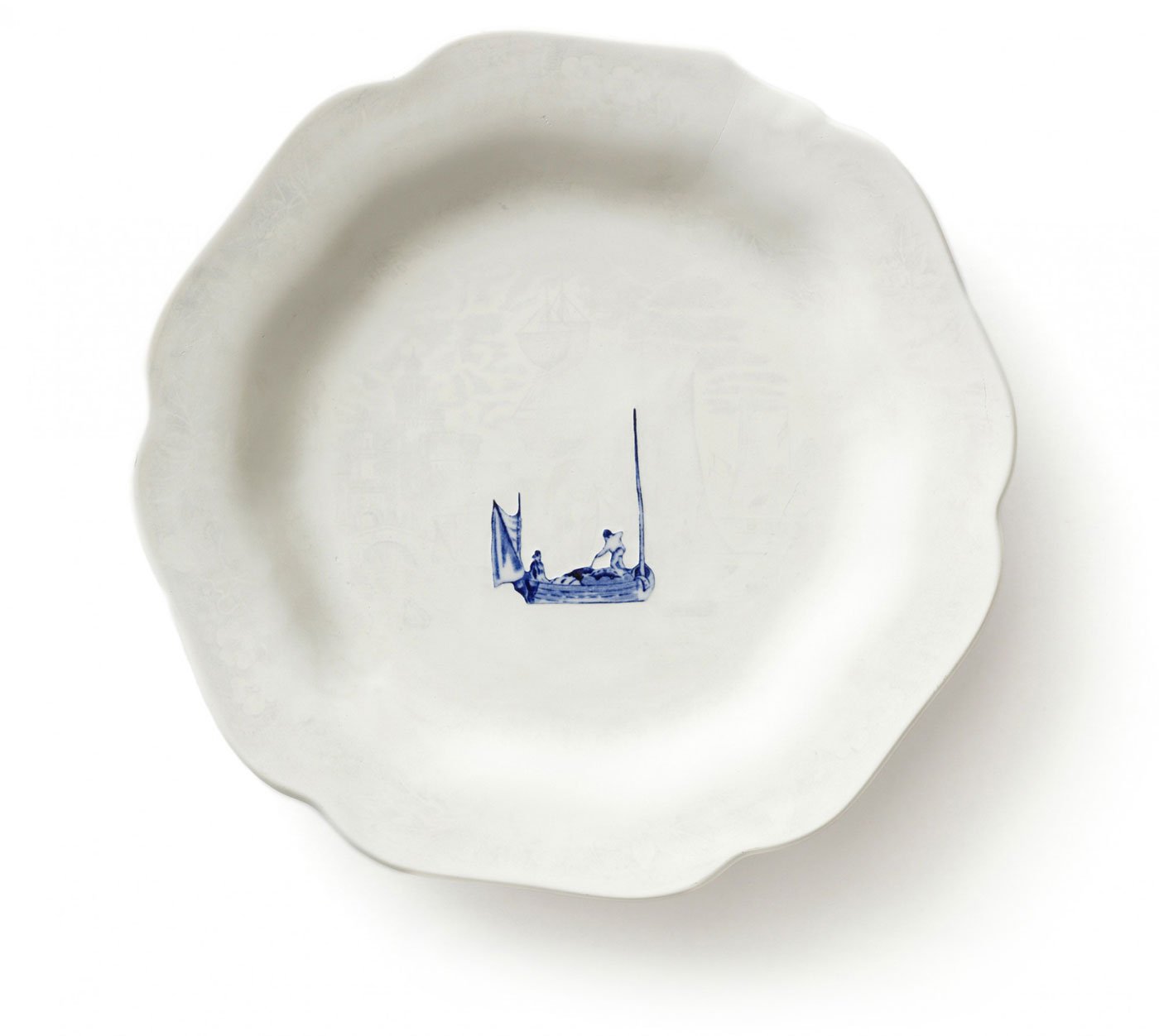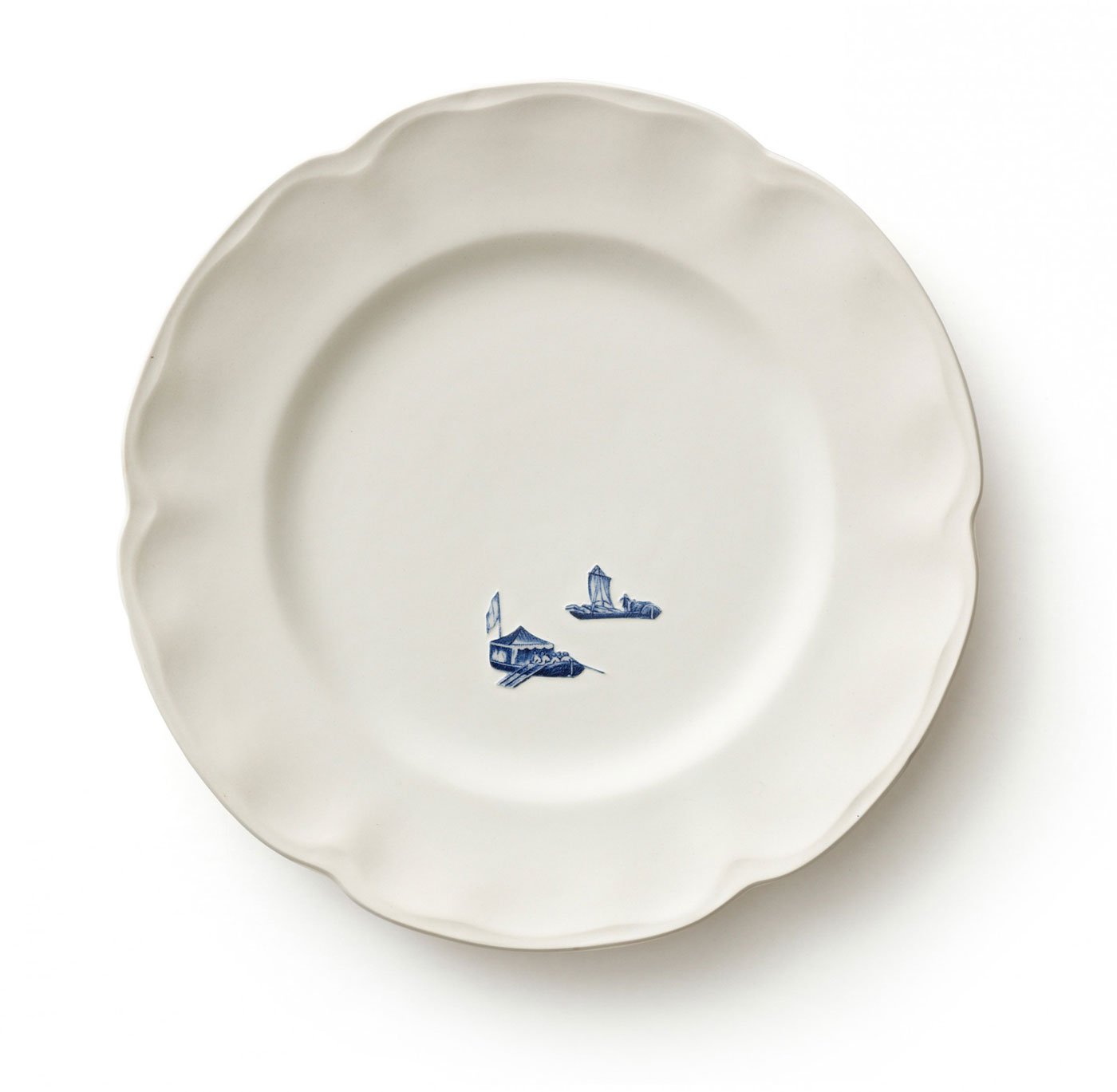Caroline Slotte is a Finnish artist interested in found objects. Her work features secondhand pieces, such as ceramic plates, and alters one detail or another, giving the old materials new life. In her series Unidentified View, Landscape Multiple, and Gone Fishing, among others, Slotte’s canvas is the dinner plate. For Unidentified View, Slotte overlaid each plate with a strip of ceramic, raising miniature architecture up from the smooth surface. The plates, blank and stone-like except for the little buildings, have an ancient appearance to them despite their contemporary revisions.
Similarly, in Landscape Multiple, the plates show classical scenes with a modern twist. To make the pieces in Landscape Multiple, Slotte cut into nesting sets of china, taking away pieces so that, when the plates are stacked, the scenes they depict appear to deepen. Reminiscent of storybook cut-outs, the multiples feature classical images of churches, farms, and waterfronts, and the holes in them bring attention to the background, where the lines seem to disappear into wilderness of blue and white.
The plates of Gone Fishing each feature one or two boats isolated on a white background. People can be seen in the boats, which raises the tension of the image. Where are they going? The ocean of the plate shows no markers, so they are far from land. How did they get there? Looking at the design, I at first thought that Slotte painted the classical scenes onto plain white china. But, looking again, I wonder if the boats are original and if the scenes that would have surrounded them were whited out.
Much of Slotte’s work raises questions about how the plates were made and what their images could mean. Refusing to answer these questions, Slotte accents the narrative elements from the original china, encouraging viewers to speculate about the objects in both their previous and contemporary forms.




